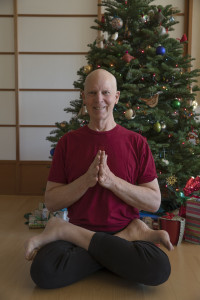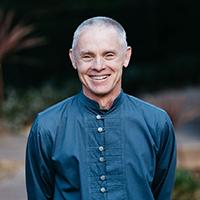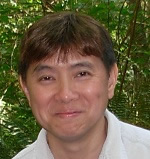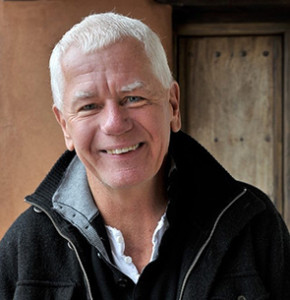 Happy Solstice, Happy Hanukkah, Merry Christmas, Happy New Year.
Happy Solstice, Happy Hanukkah, Merry Christmas, Happy New Year.
As we flow along with the transition from waning yang to maximum yin and then yin transforming to new born yang, the time is ripe for deep introspection and dissolving into Presence. As such, I offer you some holiday gifts for your practice in the form of some wisdom from three of my favorite teachers, Adyashanti, Jeffrey Yuen and Frank Ostaseski.
We begin with Adyanshanti’s clear and concise description of what he calls True meditation. By the way, as I discussed in the previous post, I find this process very difficult. I have become quite seduced by the subtle levels of form, with all the insights and traumas that arise with there. This is a universal story, as the experiences of Buddha and Jesus have pointed out. The egoic structures cannot survive in Timeless Presence, so they will become more and more subtle in their ways of preventing us from dropping into our True Nature.
For me, refined focal attention (samadhi) in the energy fields of the body has become places of egoic stuckness. The pleasurable ones are the infinite nuances of the energy patterns. I can follow them forever and never arrive in stillness. My yang attentional field wants to keep ‘doing’. I am, very slowly, learning to have a yin attentional field, where my attention moves to a place in the body, and then I ‘get out of the way’ and allow the energy to do its own thing. Bonnie Bainbridge Cohen, my somatic guru is helping me with this. And then, with some grace, my attention can dissolve into Presence.
The unpleasant places of stuckness are the granthis mentioned in the previous post. Here, fear and armoring against the fear create a loop on tightening and constriction. As with the fun stuff, maintaining a ‘yin’ attentional field is the key to help resolve/dissolve these energetic habits. Occasionally, True Nature, drashtuh svarupe, appears from behind the attachments as open, spacious, effortless resting and knowing. I find that opening to spaciousness is helpful, but this is still operating in the world of form. And Presence is open to everything, including stuckness, so ultimately I just laugh at my own foolishness. Adya offers similar advice, in his own unique and simple way.
 “True meditation has no direction or goal. It is pure wordless surrender, pure silent prayer. All methods aiming at achieving a certain state of mind are limited, impermanent, and conditioned. Fascination with states leads only to bondage and dependency. True meditation is abidance as primordial awareness.
“True meditation has no direction or goal. It is pure wordless surrender, pure silent prayer. All methods aiming at achieving a certain state of mind are limited, impermanent, and conditioned. Fascination with states leads only to bondage and dependency. True meditation is abidance as primordial awareness.
True meditation appears in consciousness spontaneously when awareness is not being manipulated or controlled. When you first start to meditate, you notice that attention is often being held captive by focus on some object: on thoughts, bodily sensations, emotions, memories, sounds, etc. This is because the mind is conditioned to focus and contract upon objects. Then the mind compulsively interprets and tries to control what it is aware of (the object) in a mechanical and distorted way. It begins to draw conclusions and make assumptions according to past conditioning.
In true meditation all objects (thoughts, feelings, emotions, memories, etc.) are left to their natural functioning. This means that no effort should be made to focus on, manipulate, control, or suppress any object of awareness. In true meditation the emphasis is on being awareness; not on being aware of objects, but on resting as primordial awareness itself. Primordial awareness is the source in which all objects arise and subside.
As you gently relax into awareness, into listening, the mind’s compulsive contraction around objects will fade. Silence of being will come more clearly into consciousness as a welcoming to rest and abide. An attitude of open receptivity, free of any goal or anticipation, will facilitate the presence of silence and stillness to be revealed as your natural condition.
As you rest into stillness more profoundly, awareness becomes free of the mind’s compulsive control, contractions, and identifications. Awareness naturally returns to its non-state of absolute unmanifest potential, the silent abyss beyond all knowing.
SOME COMMON QUESTIONS ABOUT MEDITATION
Q. It seems that the central instruction in True Meditation is simply to abide as silent, still awareness. However, I often find that I am caught in my mind. Is it OK to use a more directed meditation like following my breath, so that I have something to focus on that will help me to not get lost in my mind?
A. It is perfectly OK to use a more directed technique such as following your breath, or using a simple mantra or centering prayer, if you find that it helps you to not get lost in thought. But always be inclined toward less and less technique. Make time during each meditation period to simply rest as silent, still awareness. True Meditation is progressively letting go of the meditator without getting lost in thought.
Q. What should I do if an old painful memory arises during meditation?
A. Simply allow it to arise without resisting it or indulging in analyzing, judging, or denying it.
Q. When I meditate I sometimes experience a lot of fear. Sometimes it overwhelms me and I don’t know what to do.
A. It is useful when experiencing fear in meditation to anchor your attention in something very grounding, such as your breath or even the bottoms of your feet. But don’t fight against the fear because this will only increase it. Imagine that you are the Buddha under the Bodhi tree, or Christ in the desert, remaining perfectly still and unmoved by the body-mind’s nightmare. It may feel very real but it is really nothing more than a convincing illusion.
Q. What should I do when I get an insight or sudden understanding of a situation during meditation?
A. Simply receive what is given with gratitude, without holding onto anything. Trust that it will still be there when you need it.
Q. I find that my mind is spontaneously forming images, almost like a waking dream. Some of them I like, while others are just random and annoying. What should I do?
A. Focus attention on your breathing down in your belly. This will help you to not get lost in the images of the mind. Hold the simple intention to rest in the imageless, silent source prior to all images, thoughts, and ideas.”
© 2011 by Adyashanti. All rights reserved.
The following interview with Jeffrey comes from the website of the Academy of Classical Chinese Medicine, in Ireland, a great resource for Jeffrey’s wisdom. In this Q and A, he is describing why he is going to be teaching a program on Shamanism. Many of his observations are almost word for word parallels to Adyashantis comments on his own approach to spiritual healing he offered in a recent 5 day silent retreat attended by Kate and Sean. As we have been focusing on Daoist imagery in our classes, hopefully we can begin to see that our somatic yoga prectice can be personal shamanic journeys for our own healing. I’ve put in bold face type some of the key principles Jeffrey mentions.
 Q. Could you begin by giving us the background to this class, and why you decided to teach it?
Q. Could you begin by giving us the background to this class, and why you decided to teach it?
“I have to say that it was not something I had intended to do. What I was planning to do this past year was to teach one of my normal one-year programme classes on healing with stones and things like that. The previous year we did a one-year programme on classical Chinese herbal medicine, and I touched on shamanism and herbal medicine. A lot of the students were really thrilled with that segment of the class and wanted me to continue teaching it – but I was somewhat ambivalent because I didn’t know how seriously people would be taking it.
“If you’re going to teach a class like this, you’re going to do exercises with the students, and a lot of those exercises really involve altering one’s state of consciousness. And there are a lot of ramifications when you change the reality of how you’re seeing the world, and yourself. Without proper grounding you can get into a lot of trouble. So I thought, well, maybe I’ll do that in the future. And I was set on teaching a class on healing with stones. But in a dream, it was told to me that I should teach this particular class.”
Q. When you say a dream, Jeffrey, do you mean literally a dream?
“Yes, in a dream an older gentleman came and told me I should teach this class. And so I made the decision.”
Q. Can you explain what you mean by shamanism?
“Shamanism, in my opinion, is the root of both religion and medicine. It’s inseparable. Both religion and medicine are supposed to offer some sense of salvation, or redemption – be it of the physical body, be it of the soul. If we look at the historical figures within Daoism and early Chinese medicine, a lot of these were shamans. Many are depicted wearing what we would consider a shamanistic outfit. They might be wearing feathers around their bodies. They might be wearing a mask – which would symbolise the idea that they’re becoming someone different.
“In Daoism the early connections were always with nature. These early shamans took time to be in silence, in stillness, which awoke them to another level of reality. At 20 years of age the founder of my Daoist tradition – her name is Lady Wei – would go into the woods and collect plants. Not because she was being a naturalist, but because she was being at one with the plants. And the plants that she collected became the path to healing for her.
“When you get to that level of serenity, the plant spirits – or what they call ‘plant songs’ – create an intimate connection with the person. It’s almost like the plant functions based on its interaction with the healer, rather than on a more objective list of classifications where you say, ‘Well, this is what that plant does’. Once you become intimate with the plant it’s almost like the spirit of the plant talks to you – and it then becomes part of who you are. So that plant works for you because it’s being activated, or invoked, by who you are.”
Q. So shamanism always involves connection with the spirit world, in one form or another?
“I would say there are many levels by which one might practice shamanism. People work at the level they’re most comfortable with, or the level that their own cultivation has evolved into. There are a bunch of students in my class in New York who who already consider themselves to be shamans. They’ve undergone training in the Amazon, in Peru; there’s one person who’s an African shaman and there are a number of Native American shamans.
“In the Daoist tradition which I belong to, the Shang Qing school, we do a lot of meditation. In the course of that meditation we enter into what I guess, in the West, you would call ‘an altered state of consciousness’. We call it ‘entering into another reality’. And in that reality you get to learn from those things that you make contact with. You basically allow your consciousness to go into different realms, and at the same time you become another consciousness. You don’t try to control anything, you try to be open to everything. There’s a sense in which you lose who you are when you’re in that meditative state – and then you return back to how you basically believe you ‘are’. It’s almost like schizophrenia.”
Q. Which is why you have to be so well grounded in your own reality to begin with?
“Right. So you can see why I was ambivalent about wanting to teach something like that to a group of students – a lot of whom I don’t know individually. At the beginning we did a lot of grounding exercises, and I tried to emphasise that when you go into one of these states there’s a lot of things you need to do to return to physical reality- such as put your attention to parts of your body. So your body becomes like a grounding tool which helps you to stay anchored.”
Q. For you, Jeffrey, is the shamanistic approach an important tool in a healer’s repertoire?
“I think it’s probably the most important tool. About six years ago I went into semi-retirement. I didn’t want to practice Chinese medicine for a period of time, and it was because I wanted to take time to contemplate the essence of healing. To me, that was not what I was practicing. There was something I believed was still missing, in terms of working with individuals to seek healing based on the individual, rather than just giving herbs or giving acupuncture or other healing modalities. A lot of it was really asking, what is the underlying spirit of healing? And taking time to contemplate and reflect on that. And I can’t say I’ve found the answer! But I have definitely come to a greater realization of what it is that I believe needs to occur in the process of healing – and that is, that the consciousness that brings on disease cannot be the consciousness that brings on healing.”
Q. This is something you’ve spoken about before, Jeffrey: could you sum up why you feel it’s so important?
“I believe that to heal a person has to shift their consciousness.
In Western medicine there’s this sense of objectivity – of not allowing the transference of the patient into the clinician, and vice versa. But I believe that’s not appropriate. I believe that I have to be in the consciousness of my patient so that I can alter that consciousness, and then bring that consciousness back to the patient to see if they can alter it. So it was really for me to become more aware of how my patients were seeing themselves – almost like a form of therapy. I had to take ownership of their consciousness, to see how they would think in various circumstances. And maybe give them different ways of looking at it, or seeing it, in order to provoke them to change their perception.”
Q. As you’ve said, however, entering into an altered state of consciousness can be dangerous – if it’s done without sufficient preparation and grounding. What are the potential dangers of a shamanistic approach, and can you give some examples of the grounding exercises you used with your students?
“Well, the dangers might involve you summoning up or generating images – or, for lack of a better word, entities – that potentially can be harmful to yourself. If you start meditation and you believe in, say, ghosts, then you may enter a dimension where there are ghosts. Because if I say ‘I’m afraid of ghosts’, the hair on the back of my neck starts to rise, and the fear can build into a state of panic. That state of panic is going to sabotage your ability to go further.
“That’s why one of the early lectures that we had on the shamanism course was all about how not to be afraid of death and dying. The most that anything can do to you is to cause you to die – and if you’re not afraid of death and dying, then you’ve overcome one obstacle to shamanism already. That’s why, in some religious traditions, people sometimes meditate in cemeteries or get buried underneath the ground. They’re doing things to stimulate fear. The ultimate fear is the fear of annihilation – that you’ll no longer be who you are. So if you can overcome that fear in a mental, emotional and ultimately physical way, that’s one of the grounding techniques.
“One of the things the students had to do was learn to be comfortable in total darkness. When I was young, I grew up in New York city – so my meditation room was the closet. I would be locked up in the closet, and it would be totally dark! Some people would find that really uncomfortable. But the idea is that in total darkness you can generate light. The Daoist master Chuang Tzu writes that with day comes night, with life comes death. Night returns to day and death returns to life. The idea is to provide a beacon of light, to provide guidance to those who are stuck in that state of consciousness. Because if a healer is stuck there, then they can’t really offer their patient much resolution – outside the comfort of compassion. That’s very important. But it may not just be enough for healing to take place.”
Q. To sum up, then, a shamanistic approach to healing is not really about externals – feathers, masks and so on – but has more to do with internal change?
“The ultimate thing to realise is that there are no tools in shamanism. Although people use feathers, or they use chanting, or drumming, those are just crutches – just as in healing we use herbs and needles and all of that. But the healing comes from within. What we do is, basically, we are touching the person with our spirit. Anyone who is a healer in the truest sense just heals with their presence. We can feel that energy, and if we’re receptive to it it opens us up to the endless wonder of human possibility.”
 I met Frank Ostaseski last November at a ‘Love, Death and Dying’ workshop at the Upaya Zen Center in Santa Fe, and wrote about it here. Frank is one of the most open, clear and heart centered people I have ever met. So there was with shock and sadness when I heard that he had suffered a major stroke last summer, and then a series of smaller ones afterward. I have been following his healing story through a blog series posted by his wife. Last week, he made his first public appearance at the end of major conference on end of life care sponsored by EndWell. A video was posted by his wife, Vanda, and can be seen by clicking on this link. It is quite powerful and extraordinary to hear his story about how he is being present to what life is giving him.
I met Frank Ostaseski last November at a ‘Love, Death and Dying’ workshop at the Upaya Zen Center in Santa Fe, and wrote about it here. Frank is one of the most open, clear and heart centered people I have ever met. So there was with shock and sadness when I heard that he had suffered a major stroke last summer, and then a series of smaller ones afterward. I have been following his healing story through a blog series posted by his wife. Last week, he made his first public appearance at the end of major conference on end of life care sponsored by EndWell. A video was posted by his wife, Vanda, and can be seen by clicking on this link. It is quite powerful and extraordinary to hear his story about how he is being present to what life is giving him.

